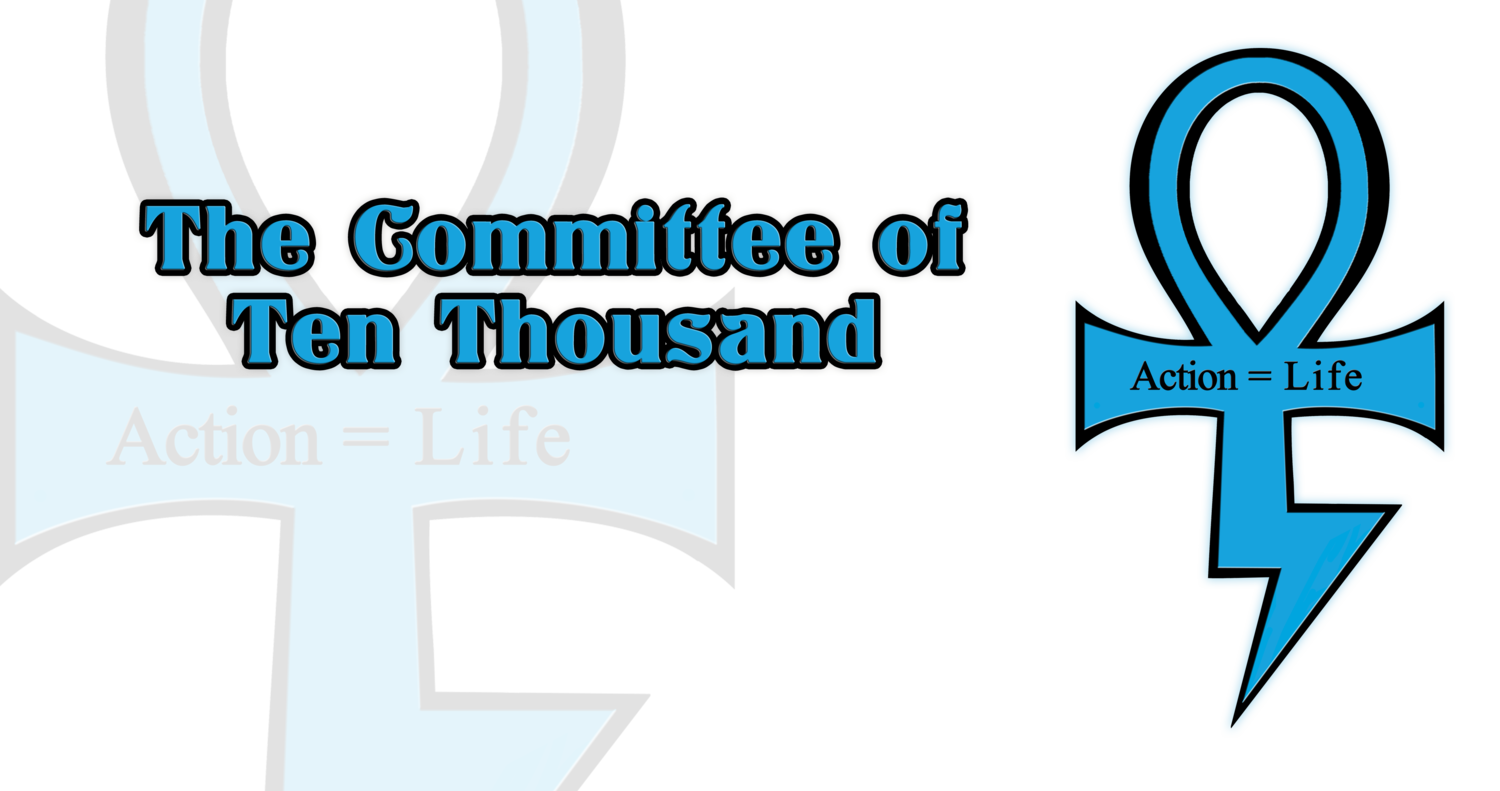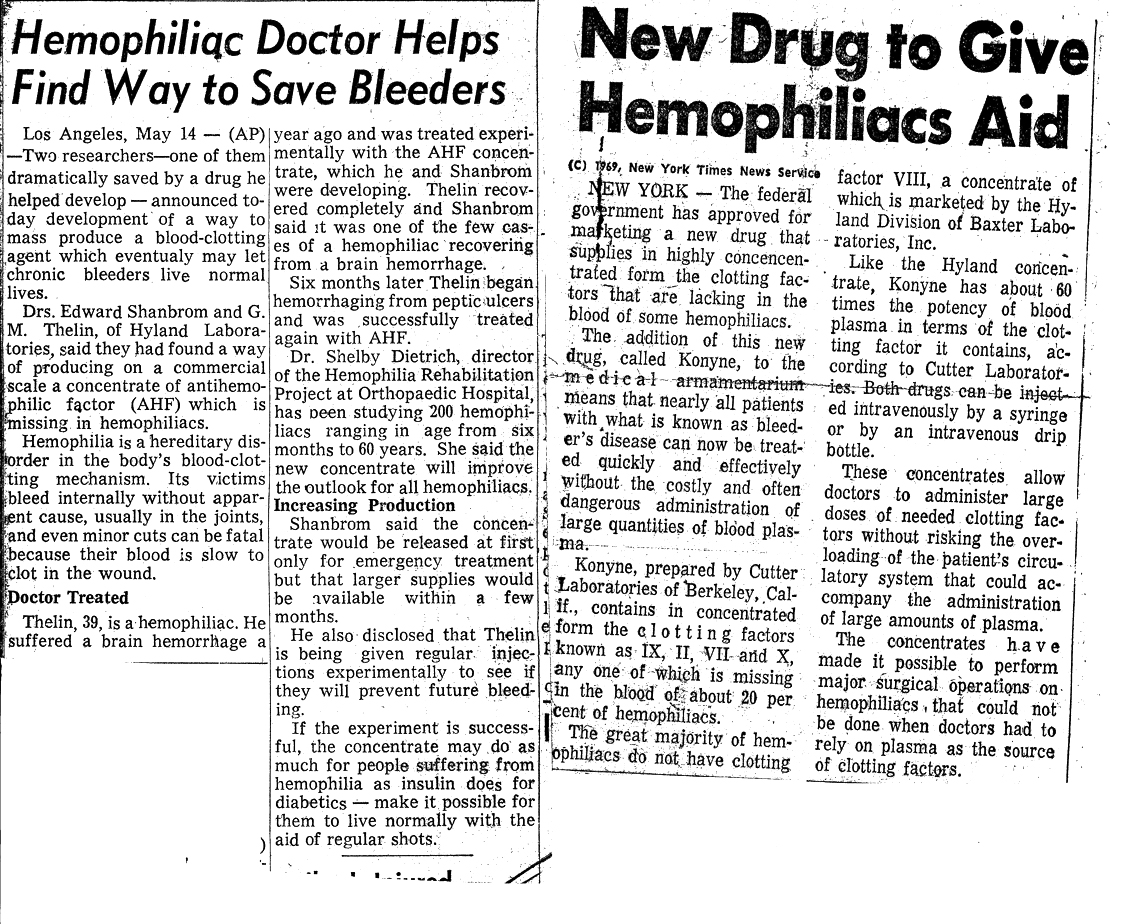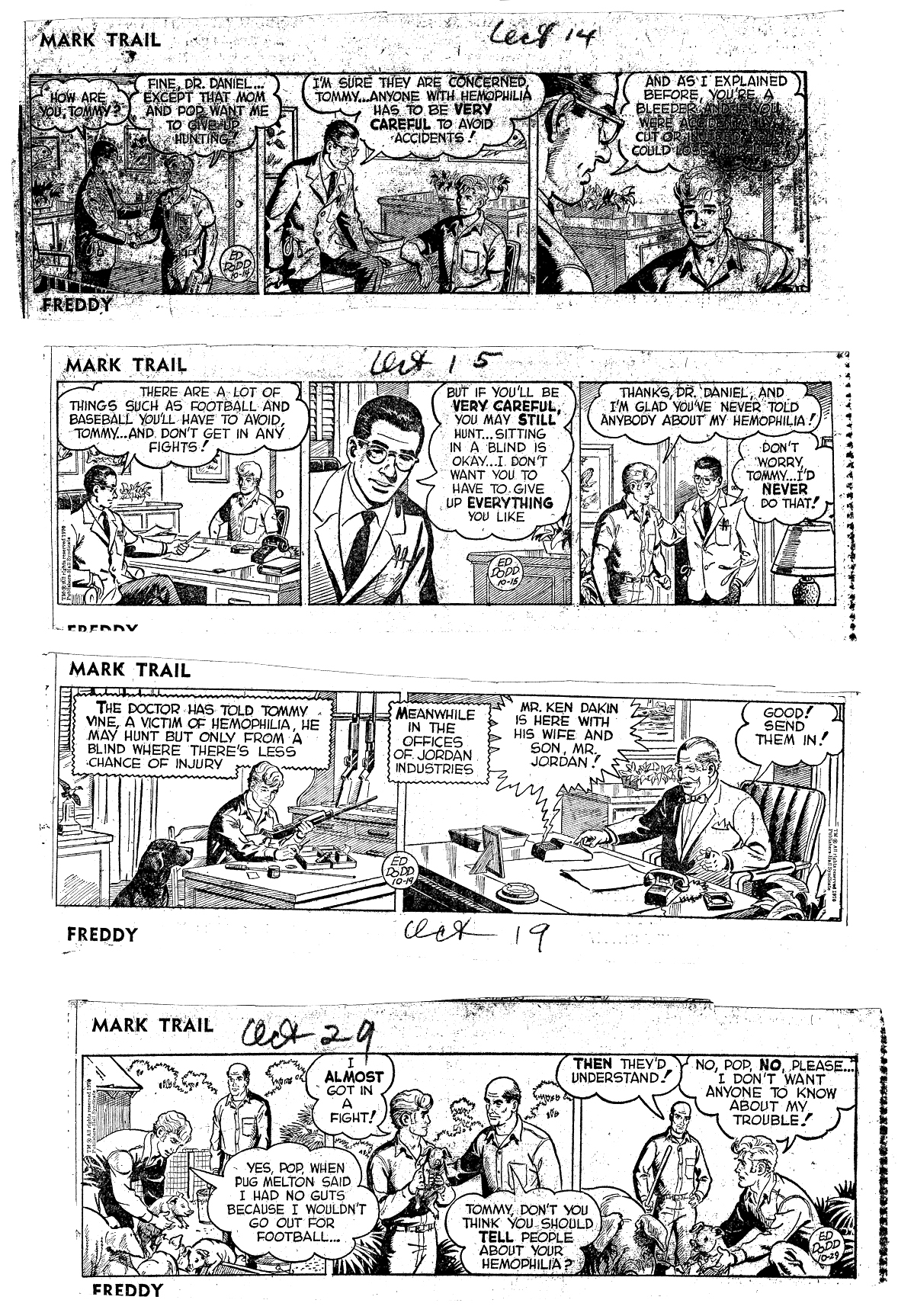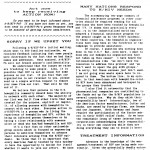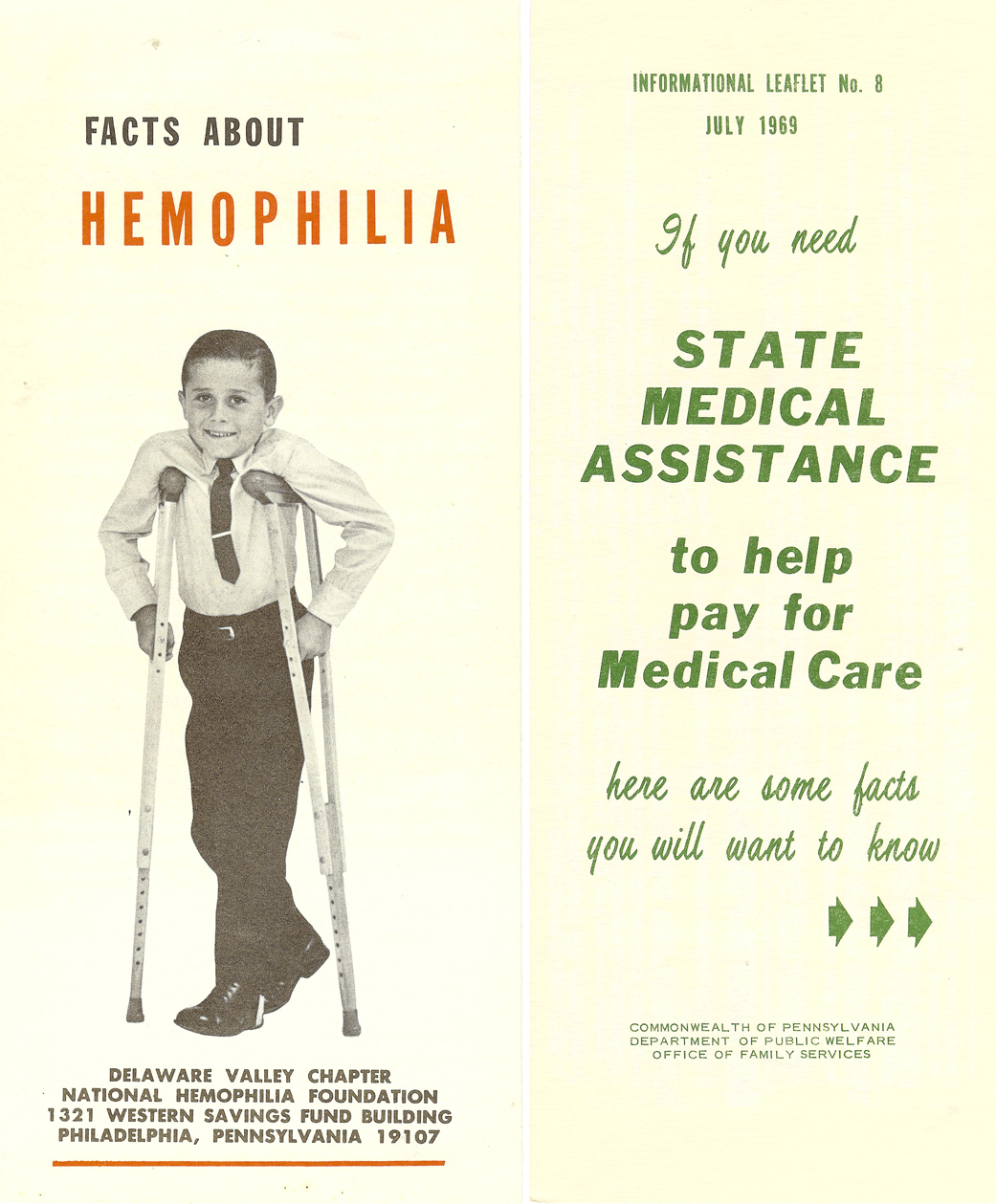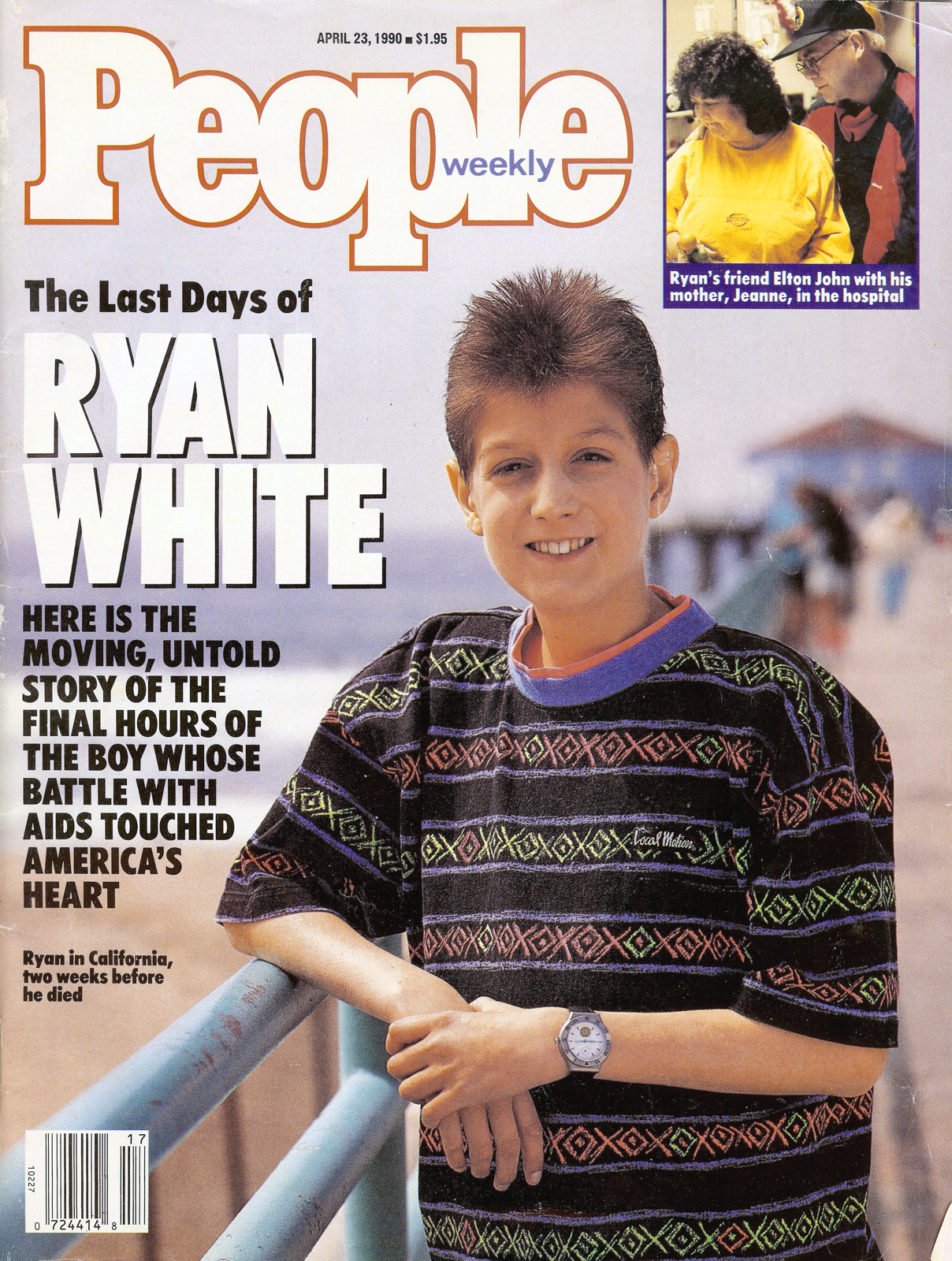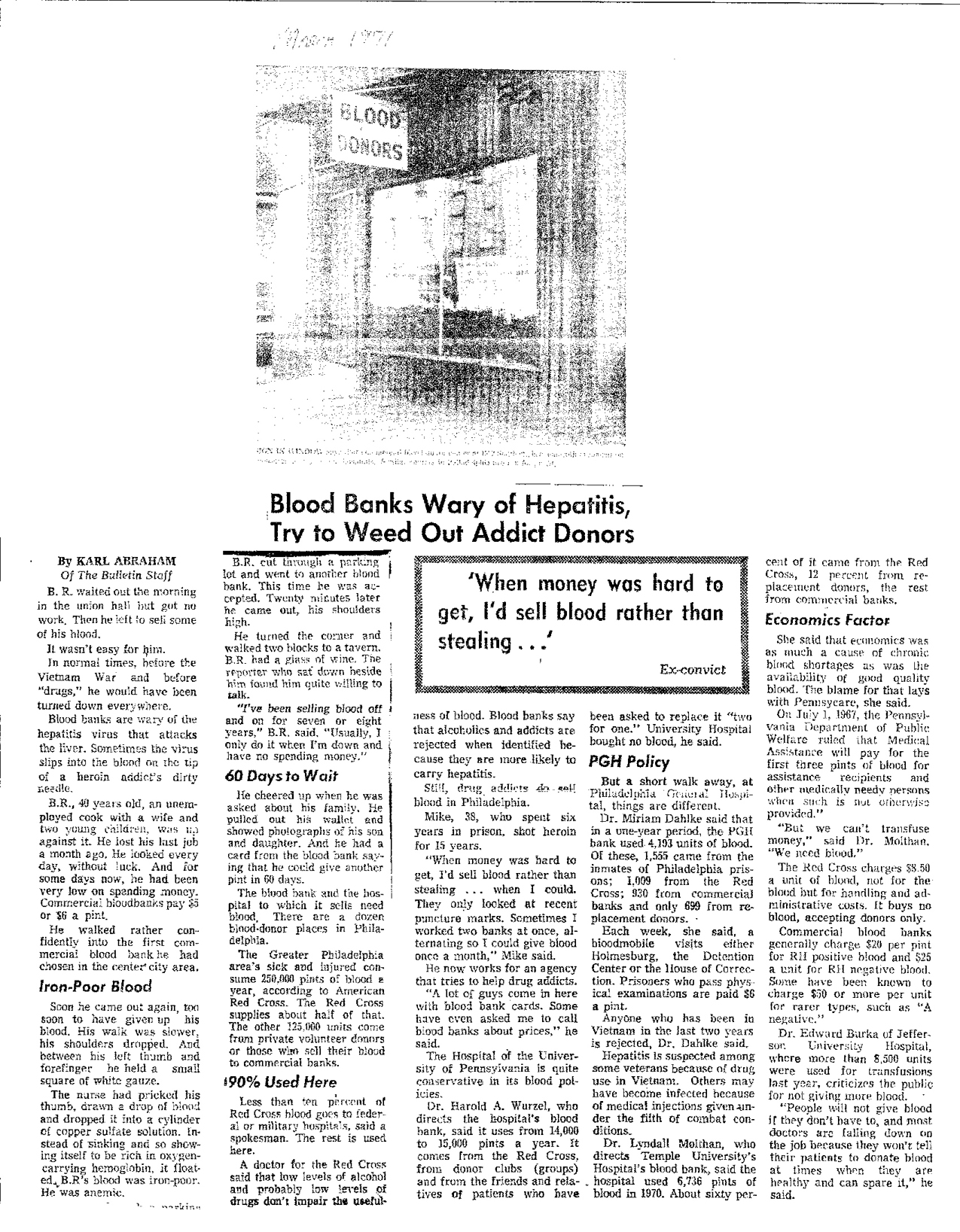Historical Record, Vol. 8
/This installment of the hemophilia "archive e-newsletter" is dedicated to the memory of Loras Goedken and the Goedken family. I've also included an attachment containing a scanned image of the COTT memorial brochure. Contained in the "archive" is a video tape of a program entitled "Ed Bradley Street Stories", which aired on CBS in 1992. In the program, CBS reporter Richard Roth interviews Loras Goedken, from which the following exchanges are excerpted:
I.
R. R. "This is factor eight and it is what infected Loras Goedken with HIV."
L. G. [seated in an examination room having blood drawn] "Every time I get an infusion, I'm tired of being a hemophiliac. Every time I have to run for a blood test, I'm tired of having HIV. But, ya' gotta' go on."
R. R. [narrative] "Goedken is from a large Iowa farm family."
L. G. [seated next to his mother, Mary at their Iowa home] "Mother had to write all the names down so she wouldn't forget us."
R. R. [narrative] "Six of Mary Goedken's seven sons were born with hemophilia. For much of their lives, the boys depended on transfusions of whole blood or plasma to stop severe bleeds. In the early '70s, factor eight changed everything. An infusion only took ten or twenty minutes, and it could be done at home."
R. R. [walking by Loras' side in a cemetary] "Who was the first to die?"
L. G. "From HIV? My brother Ernie. He was 47."
R. R. "And then?"
L. G. [standing in front of a long row of tombstones] "And then my nephew, Clayton at four and a half months old. Then Carl died; and Clayton's father, Denny; and then Jan, my wife, in April of '90; and then Clayton's mother; and then Jay died in August of '91."
L. G. [speaking from a residence, presumably his home in Houston] "If I had to point a finger, I would probably blame the factor eight producers."
R. R. "Because?"
L. G. "Because I think they were forwarned. And I think they were forwarned early enough to prevent a lot of us from getting HIV."
R. R. [narrative] "Loras Goedken was diagnosed HIV positive just before Christmas, 1985. Then, the doctors tested his wife."
L. G. "I took her in in January of '86, and they called me at the office and gave me the results of her test. And I just... [pausing] I left the office, walked around the block three times, and I'd never been around the block downtown. [pause] -did a lotta' cryin', did a lotta' kickin', and had to come home and tell her she was positive."
R. R. "You told her?"
L. G. "Yep. It was my place to tell her."
R. R. "Why?"
L. G. "She was my wife. And I gave it to her."*
II.
"Loras Goedken died at age 52 on August 24, and a singular family nightmare ended.
Altogether, eight Goedkens died. In the two decades of this [AIDS] epidemic, authorities know of no other American family that has suffered so much...
Year after year, the Goedkens died.
As Loras' wife Jan deteriorated, she spent days in front of the television with a credit card in hand, ordering stuffed animals and dolls from television shopping channels. Dementia set in. She no longer recognized Loras, and when she came home from the hospital before her death on April 18th, 1990, she did not know it was her house...
Loras Goedken was by all accounts a vibrant man, ambitious and energetic-even when hemophilia twisted his knees and elbows into swollen knobs. And he brought passion to his fight against AIDS.
He spoke at schools. He testified before a U.S. Senate committee hearing on HIV. He traveled to Japan last year as a guest speaker at the International Conference on Hemophilia and HIV...
Mary Goedkin is alone now-her husband died of stroke earlier this year. Now, in her little white house, dozens of family photographs line the walls and the shelves. The Goedkin brothers look out of their tinted graduation portraits, young, handsome, their eyes soft.
Half a mile away, there is a row of small pink headstones in the Sacred Heart cemetary in Monticello for the Goedken family.
"I didn't have to look for heroes outside my family," said [Loras' sister, Judy]. "I had them right here."**
* Ed Bradley Street Stories, CBS, 1992. ** "Family Watches Eight Die of AIDS", The Associated Press, 50 Rockefeller Plaza, New York, NY 10020, November 1, 1997.
III.
Below are two links to other articles written about the Goedken family:
http://www.people.com/people/archive/article/0,,20121879,00.htmlhttp://www.newsweek.com/1994/02/06/an-american-tragedy-in-iowa.html
IV.
It is the intent of the "archive e-newsletters" to present historical hemophila-related material in an accurate and objective manner which is why I generally refrain from personal commentary and rely almost entirely on quoted sources from previously published material.
I would like to add one personal thought to this edition, however.
As I looked through the archive videos and articles re: Loras Goedken, I was truly struck by the monumental sacrifice made by Loras and his family. Even after losing a brother and brother-in-law to HepC and HIV in my own family, I still could not begin to conceive of the staggering tragedy the Goedkin family endured.
Because of the enormous price paid by hemophiliacs and tainted blood transfusion recipients during the AIDS crisis, we all now enjoy a much safer blood supply. Regrettably, I do not ever recall anyone in the general public saying "thank you".
To this day, there still exists no national memorial, visible to the general public, to honor our dead. There is a sculpture and fountain within NHF headquarters which does not include names, which few will ever see. Some local hemophilia chapters have planted trees or display quilts or photos of our lost, but those are the only efforts I am aware of. Engand, Canada, and Japan are among those countries who have established national memorials, and I can only wonder why it has never been done in the U.S.
Once more, the hemophilia community must "do for itself". In that regard, I have included an attachment containing the COTT memorial brochure. Will YOU help us to remember our lost by supporting the Committee of Ten Thousand's effort to establish a national memorial? Information on how to help can be found in the brochure.
Thank you,
Barry Haarde
